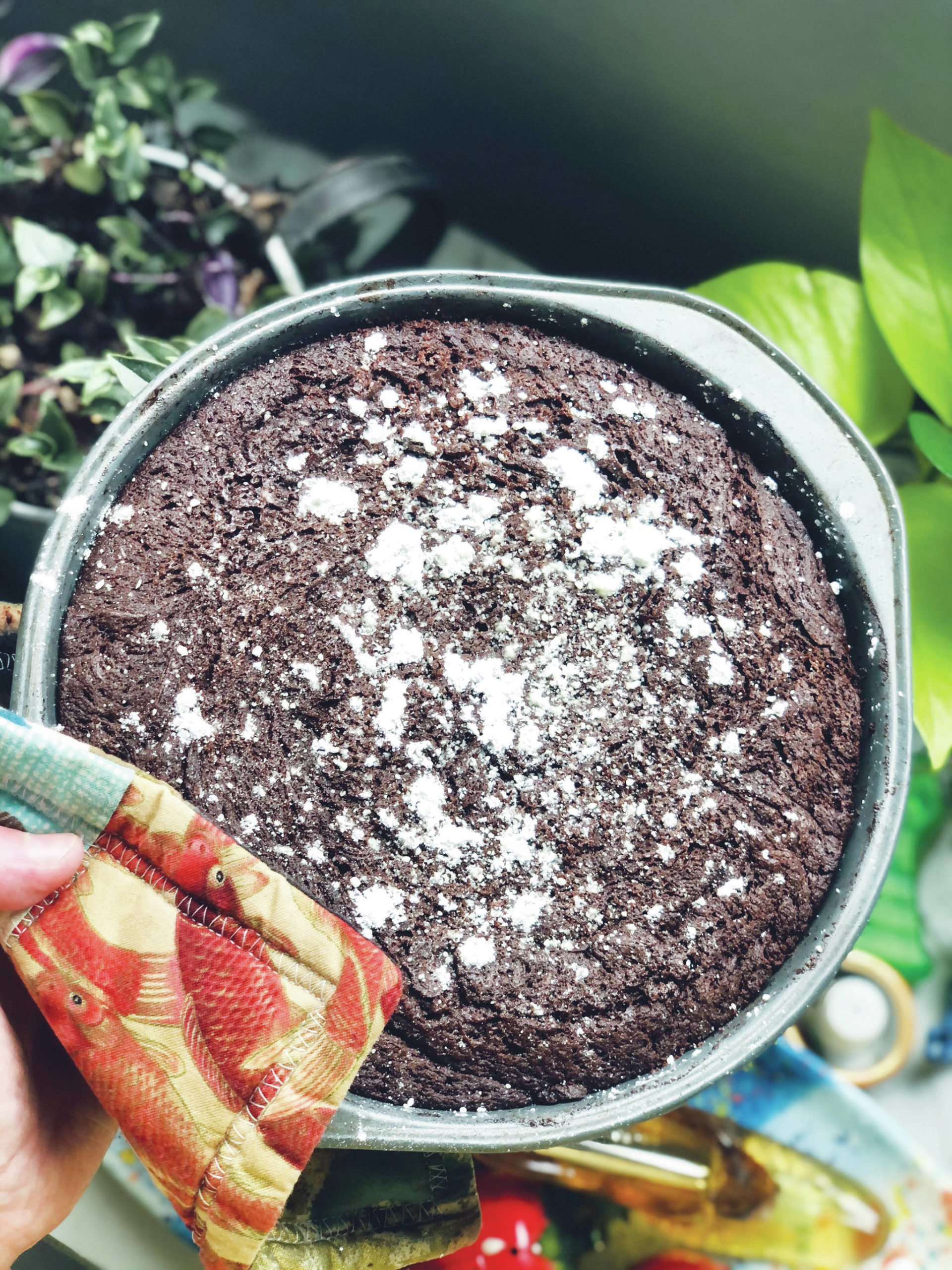All week, I’ve been trying to figure out what recipe I wanted to feature in the column. I couldn’t even decide what kind of food — a main dish, a dessert, a sandwich, a drink — I wanted to make. It’s been one of those weeks where my inspiration to cook is nonexistent.
I called my grandma, as I often do when I’m procrastinating, and we were talking about how amazing her blueberry crumble recipe is. (I featured this recipe weeks ago). She then complimented me on “that chocolate cake you made us that one time.” I couldn’t remember what she was talking about at first, but eventually I was brought back to when I was in college, living with her and my grandpa, and baking for them all the time. I made them something called kladdkaka — a dense, sticky, gooey, richly chocolate cake. It’s like a flat fudgy brownie.
Kladdkaka cake recipes started popping up in Sweden in the 1970s, and apparently, they are one of the most popular desserts in the country. Both my grandparents have grandparents who were Scandinavian, and were exposed to all kinds of food traditions, like ebelskivers and lingonberry everything. Neither of them had heard of kladdkaka before. I can’t even remember where I had heard of it, but I made it for us and we all loved it.
I made it multiple times that year for all kinds of occasions. I remember I made some for a friend, and that friend made it for a party and everyone at the party wanted to know how they could make kladdkaka. It’s just really good, if you like chocolate.
In Sweden, this cake is usually eaten for fika, which is a coffee and cake break. While coffee and cake are a main part of the tradition, it’s really an excuse to slow down and visit with friends or colleagues.
The nice thing about kladdkaka is that it requires only a handful of staple recipes you probably already have at home, and it can be made in about a half an hour. The cake doesn’t have any baking powder or other leavening agents, and is very similar to a fudgy brownie. My favorite kladdkaka, and what I strive for, is sort of a cracked crispy top and a sticky, fudgy center. The key to great kladdkaka is to make sure the cake doesn’t bake too long, and to allow it to completely cool. Following these steps will ensure the cake has its trademark stickiness.
This recipe is adapted from Swedish chef Magnus Nilsson’s recipe from the “Nordic Baking Book.” The chef has spent years studying kladdkaka traditions in kitchens across Sweden, and has multiple recipes for the cake in his book.
He uses chocolate that he melts and folds into the batter, and he lines his baking sheet with bread crumbs. I’ll be using cocoa powder to coat my baking pan to keep the cake from sticking. If you don’t have chocolate on hand, you can use about 1⁄3 cup of cocoa powder in place, just be aware the chocolate flavor might be less pronounced.
Serve warm or cold, with whipped cream or ice cream, or top with fruit.
Kladdkaka
1¾ sticks butter, plus extra to grease
7 ounces dark (semisweet) chocolate, broken into small pieces
4 eggs
1¼ cups sugar
⅓ cup flour
pinch of salt
Butter a springform pan or cake pan and preheat the oven to 345 degrees.
In a medium-sized pot, heat up the butter on low heat. Add the chocolate as soon as the butter is melted, constantly stirring to combine the butter and chocolate.
Remove from heat once combined and add in the rest of your ingredients. Stir until all ingredients are well incorporated and a batter has formed.
Scrape the batter into the baking pan, and level the surface so the batter is even across the pan. Bake for 15 to 20 minutes. The middle will still look slightly unset, but the edges should be browned and crispy. Let the cake cool completely and enjoy.

